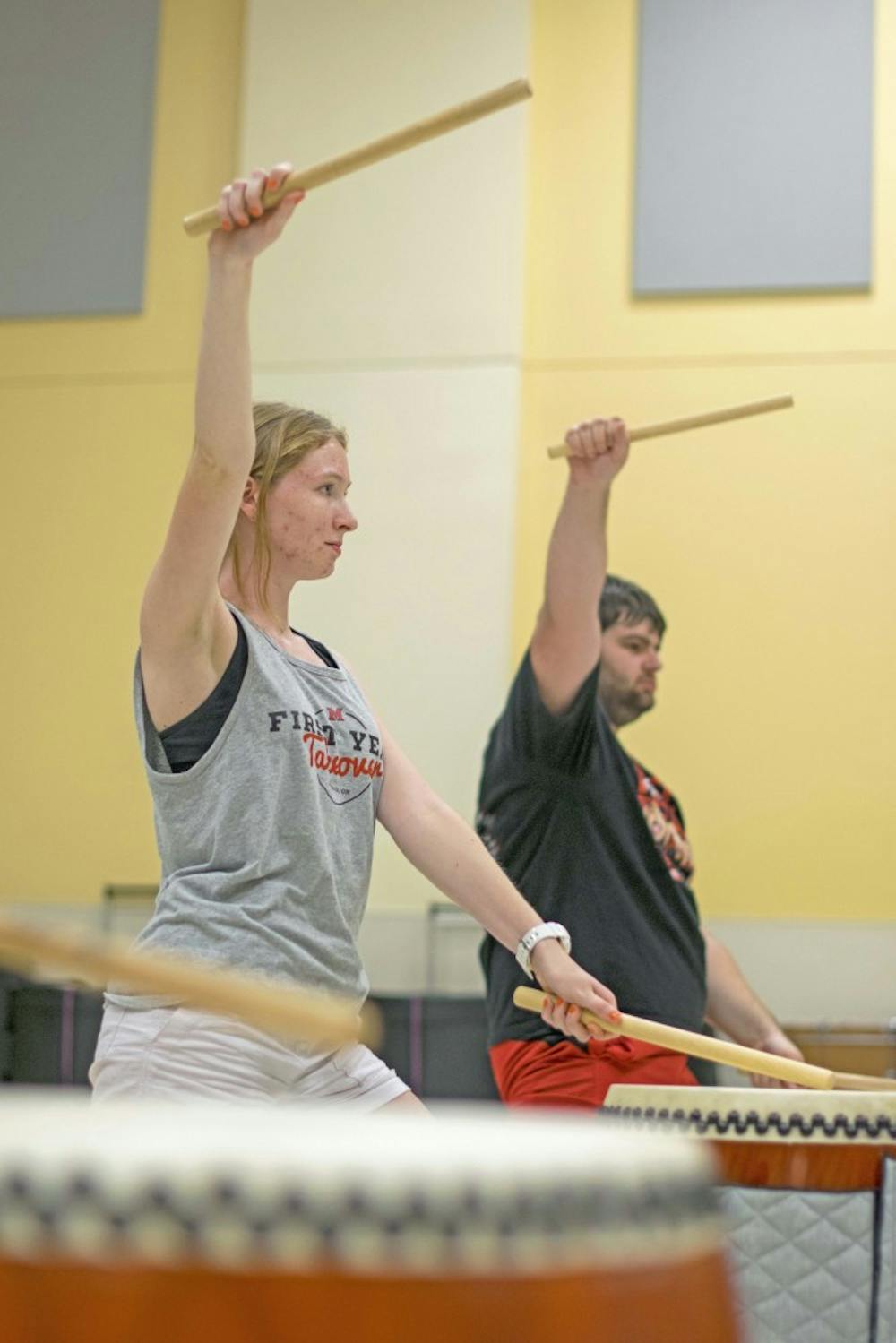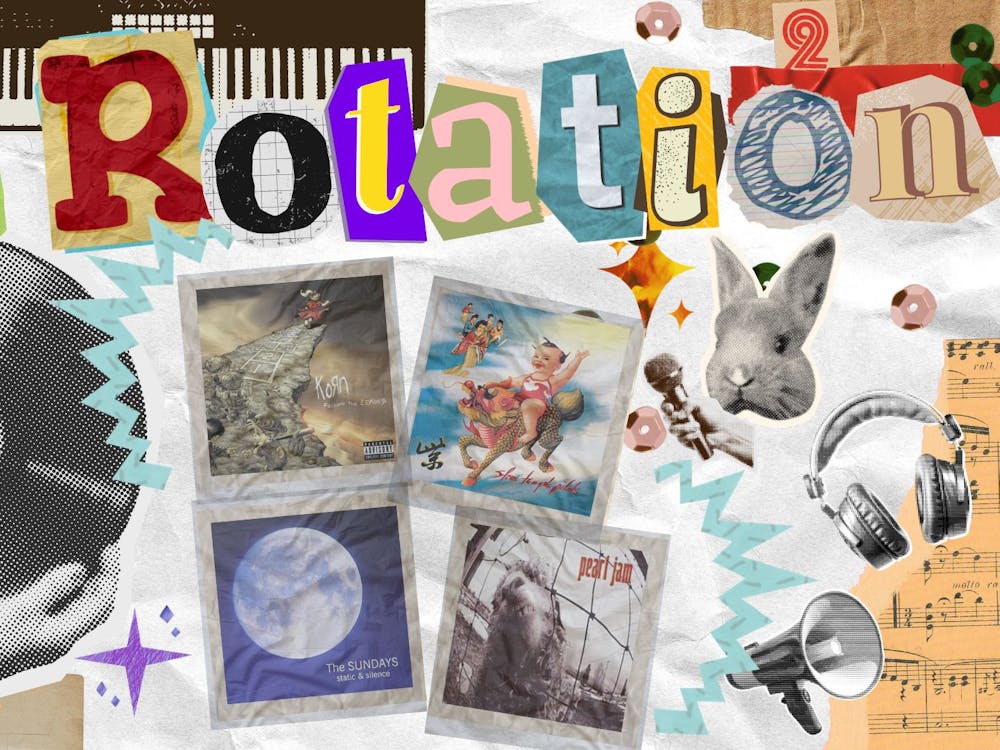"Ichi, ni, so-re," echoes through the quiet orchestra room.
The call, Japanese for "one, two, ready, go," ignites the drums to thunder to life.
A deep, resonant beat shakes the entire room, rattling the tall steel cabinets and black music stands that line the walls. The drummers sway back and forth, poised over the lacquered wood of the ornate Japanese drums, pounding away.
Gathered in Presser Hall on a Saturday afternoon, the members of Miami University's Taiko Club work on their elaborate musical routine.
The taiko club practices a traditional form of Japanese drumming that is far more dynamic than most percussion routines. In any given song, alongside pounding out an energizing rhythm, the musicians move and dance around their instruments. Implementing scissor kicks, broadway cross-steps, angular poses and fervent jumping, the drummers create art that is both auditory and visual.
During the whole performance, they give off a lively and upbeat energy.
"Looking like you're having fun is part of what makes the music so great," said TJ Knight, the club's vice-president and treasurer.
The club splits its three-hour practices into two segments: one for beginners and one for veterans.
The first half is reserved for the beginners, who are instructed on the fundamentals of the sport by a veteran instructor. Their routines aren't as complex as the moves displayed by the veterans, but the routines still give the new members a chance to hone their craft.
After an hour and a half, the club's older members fill the room.
The five veterans quickly break into their routine with far more movement and complexity to their song. The rhythm is more elaborate, demonstrating the heightened ability of the more seasoned drummers.
Some members of the taiko club have been practicing the art for years. Tori Jones is the club's president, and has been practicing and performing taiko style drumming since middle school.
Enjoy what you're reading?
Signup for our newsletter
"When I first started, I had just moved to Ohio, so I didn't have many friends," Jones said. "And taiko club turned out to be something I liked. I'm not usually great at expressing myself, but there's nothing you can hide behind in taiko. It's so free and energetic and open."
McKenna Hardy, on the other hand, is one of the club's newest members. She joined earlier this year and is already grasping the basics of taiko.
"In high school, I had a Japanese teacher who did taiko," Hardy said. "So I figured that I'd reach out and at least try it, and I've had a really great time so far."
The MU Taiko Club performs at a variety of events throughout the year, including collaborative concerts and individual shows. Their biggest performance is Shinnenkai, a cultural festival held in the spring. Not only does the club co-host the event with Miami's Japanese Culture and Language Club and Anime Club, they put on an exciting performance that is the highlight of the event.
After just a cursory peek into their world, the appeal of taiko is plain to see. Not only are audiences treated to a bombastic percussive performance, they're also shown a highly choreographed dance performance. This combination of movement and sound results in a veritable feast for the senses of any audience member.
headledd@miamioh.edu




